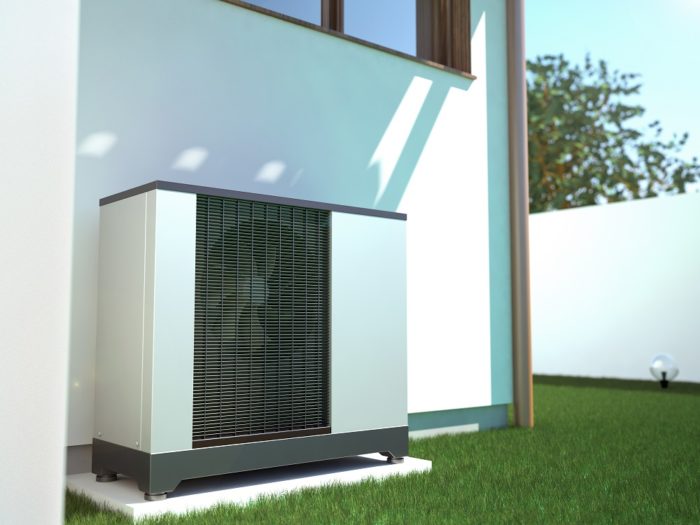How to use an Air Source Heat Pump
An air source heat pump works a little differently to other types of central heating. Our guide will help you get to grips with this kind of system.

An air source heat pump (ASHP) keeps your home warm and covers your hot water needs. However, it works slightly differently to a typical central heating system.
Don’t worry if you’re not quite sure how to use it – this guide will help you get the most out of your ASHP.
How does an Air Source Heat Pump work?
An air source heat pump takes warmth from the air outdoors, boosts it, then lets us use that heat indoors. Even if the outdoor temperature drops below freezing, the heat pump can still comfortably heat your home.
Most air source heat pumps in Scotland are air-to-water types. This means the hot air from the heat pump heats up water. This warm water runs through the pipes in your radiators, warming them up. It can also heat a hot water tank to provide hot water for your kitchen and bathroom.
Air source heat pumps need some electricity to make them work. You can keep the cost of this electricity down by:
- Using your heating efficiently
- Making sure you’re on the right electricity tariff
A more detailed explanation of how air source heat pumps work can be found in our air source heat pump guide.
Hot water tank
Unlike some other central heating systems, an air source heat pump cannot produce hot water ‘on demand’. As a result, your hot water will be stored in a hot water tank. This is usually found in a cupboard. The hot water will be between 40 and 55°C. Once a week, your heat pump will heat the tank to 60°C. This makes sure there are no health risks to you from the water.
How do I use my heating?
As with most central heating, you use a programmer. Your programmer lets you:
- Tell the heating when to come on
- Tell the heating how hot (in °C) you want your home to be
With most other kinds of heating, it’s good to only run it for a short space of time. With an air source heat pump, the opposite is true. Your heat pump doesn’t work well when it’s being switched on and off a lot. It works best (and costs less to run) if you give it plenty of time to reach the temperature you want.
When timing your heating:
- Decide what your comfortable temperature is. Most people set an indoor temperature of 18-21°C
- Decide when you want your home to be that warm. For example, you might want it to be that warm as soon as you get up
- Whatever time you decide, take away 3 hours. This is the time you’ll set the programmer for
- If your comfortable temperature is 19°C
- And you get up at 07:00
- You’d set your heating to 19°C at 04:00
In the evening, give the air source heat pump plenty of time to lower the temperature.
For example:
- If your comfortable overnight temperature is 15°C
- And you go to bed at 23:00
- You’d set your heating to 15°C at 20:00
Electricity tariffs
More and more energy suppliers are now offering tariffs specifically for heat pumps. As heat pumps use electricity, these tariffs usually offer a cheaper rate of electricity between certain hours of the day.
We currently know of six different suppliers offering a specific heat pump tariff:
Which tariff is best for you will depend on your current household energy usage and how flexible this is.
Getting even more out of your air source heat pump
When your air source heat pump was new, the installer should have set it up to work efficiently. This means you shouldn’t need to worry about any of the settings.
However, if you feel confident, you can tweak the settings of your heat pump to improve its efficiency.
You can either:
- Check the air source heat pump’s manual. This goes into detail about how to change the settings
- Visit the manufacturer’s website. There are often videos on how to change the heat pump’s settings
It’s a good idea to keep a note of the original settings. That way, you can always switch back if the new settings don’t work out.
Useful pages
Is this page useful?